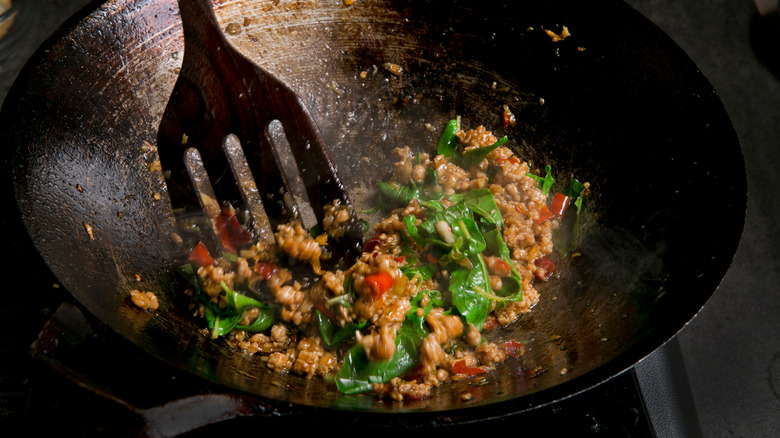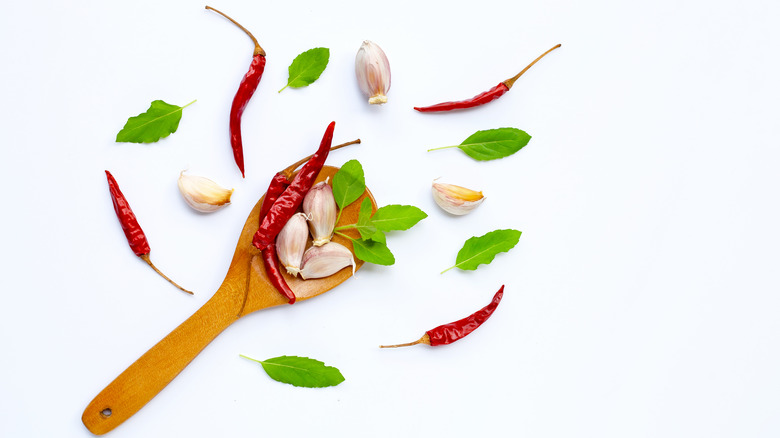The Versatile Ingredient Type Essential To Thai Stir Fry
Thai food is so much more than the college student's takeout of choice during exam week. With the never-ending creation of "Thai-style" salads and rice bowls, it's easy to believe that what makes something Thai is the addition of lime and a sprinkle of chopped peanuts. But a closer look at a Thai restaurant menu of coconut curries, barbecued meats, and Chinese-style stir-fries will reveal the breadth of Thai cooking methods and flavors.
And yes, you read that correctly: Thai stir fries are relatively new inventions borrowed from Chinese stir fry techniques (via Indulge Bangkok). The introduction of the wok in Thai kitchens has opened the door to iconic Thai rice noodle dishes like pad thai, or spiced meats like pad krapow. These Thai stir-fries contain traditional Thai ingredients such as tamarind and fish sauce, but they also implement Chinese ingredients like oyster sauce and soy sauce. In the final product, these sauces are bound by the wok hei that envelopes the dish with a smoky fragrance. However, Thai stir-fries have a specific factor that distinguishes them from other one-pan medleys.
Adding aromatics is key
Thai stir fry can be a lot of things. It can be sticky with curry paste, or dry and spiced, but the common thread in all of these dishes is the aromatic component. Masterclass says that aromatics can be defined as vegetables, herbs, or spices that imbue the dish with fragrance and flavor, especially when cooked or crushed. It may seem obvious that aromatics is a crucial element to the stir fry – after all, aromatics are a building block for foods across all cultures.
Thai cuisine heavily depends on chili and fresh herbs. Galangal, which is a rhizome that belongs to the ginger family, adds a peppered, ginger flavor that neutralizes the fish sauce in Thai dishes like tom kha kai, per Smithsonian Mag. Another fundamental aromatic in Thai stir fry is basil, holy basil, and Thai basil in particular. Both types of basil are crucial to Thai cooking, but they have different uses and flavors. Unlike the Genovese basil we usually find at the store, these types of basils become more fragrant when they're cooked. Your Indoor Herbs notes that holy basil has a stronger spice that adds peppery notes to Thai stir-fries, most commonly used in dishes like pad kee mao or drunken noodles. On the other hand, thai basil is used in Thai stews and curries because it is sweeter. Both are essential ingredients for Thai cooking, so make sure to load up on your aromatics before making Thai stir fry at home.

